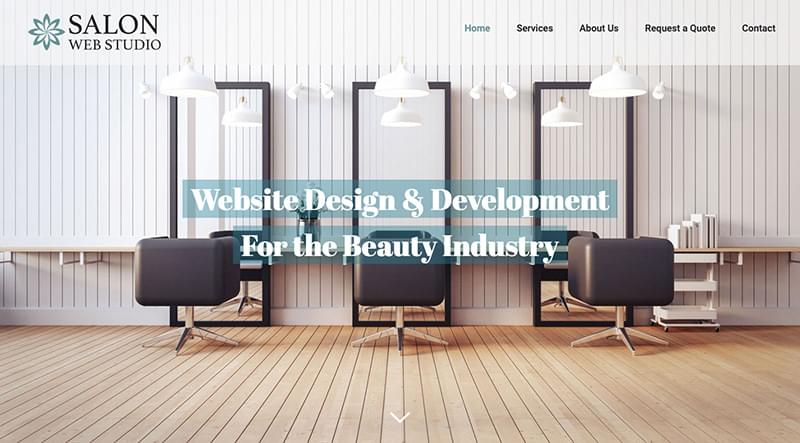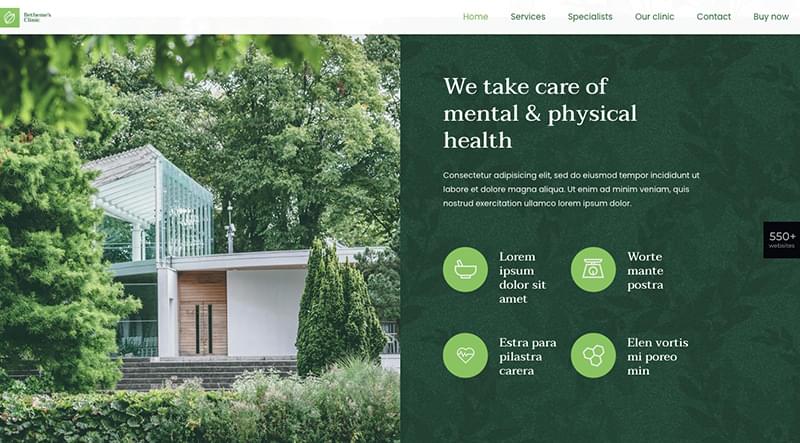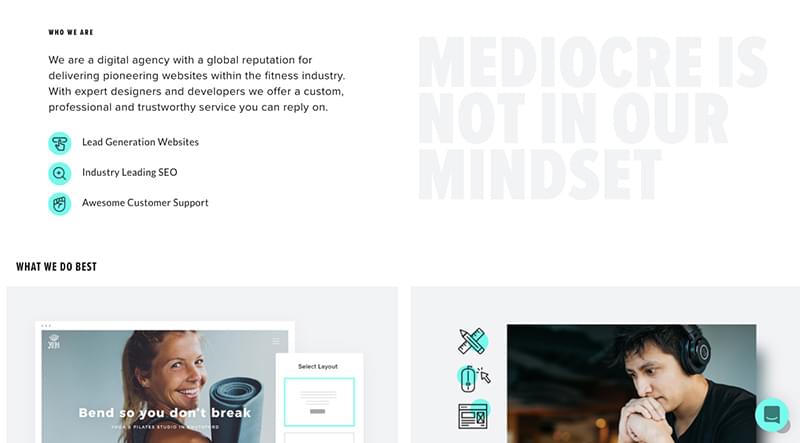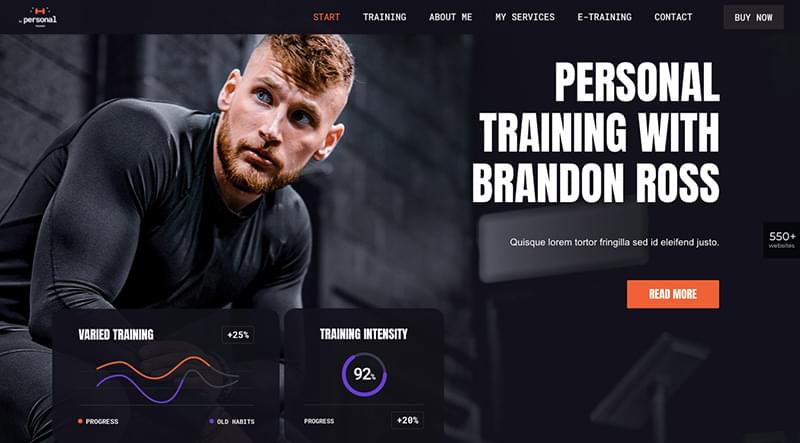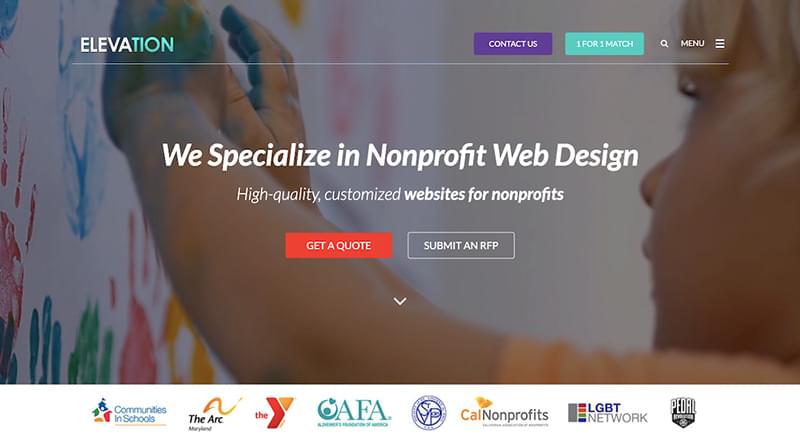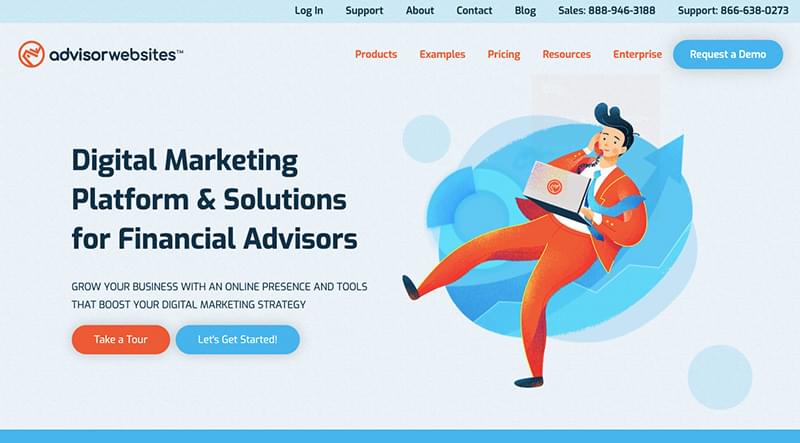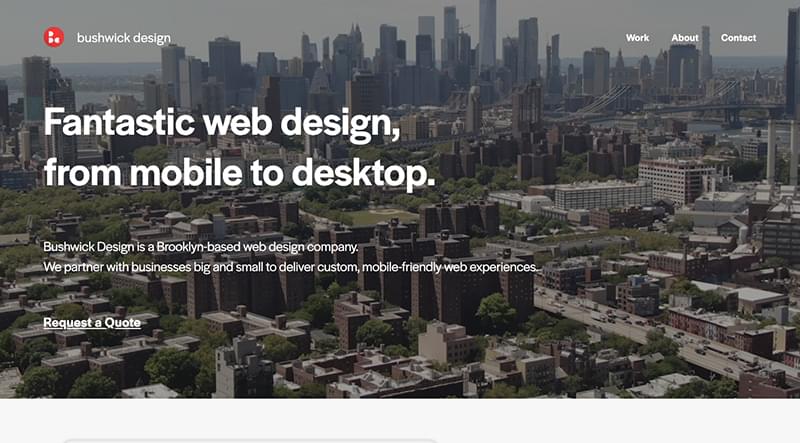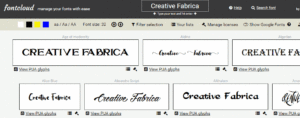- 1. Developer portfolios for the beauty industry
- 2. Developer portfolios for health and wellness
- 3. Developer portfolios for trainers and coaches
- 4. Developer portfolios for nonprofits and charities
- 5. Developer portfolios for financial services
- 6. Developer portfolios for fashion and retail
- 7. Developer portfolios with location-specific niches
- Will you be designing niche portfolio sites for your business?
- Frequently Asked Questions on Designing Niche Portfolio Sites
This sponsored article was created by our content partner, BAW Media. Thank you for supporting the partners who make SitePoint possible.
This post presents seven valuable guidelines for developers to help them create niche portfolios that will instantly impress potential clients. A well-designed niche portfolio is one of the most powerful marketing tools a developer can have to attract clients and customers.
What is the number-one thing you want your developer portfolio to focus on to impress potential clients? Naturally, it needs to indicate what you’ve already accomplished. But more importantly, it needs to show what you’re capable of doing.
Admittedly, an ability to create great code — to satisfy almost any need — would be an exceptional selling point. But even if you were capable of doing so, you’d be much better off niching down and presenting yourself as a specialist in one or several areas than portraying yourself as a Jack of all trades — and consequently, to some potential clients, a probable master of none.
That’s why you’ll be much better off designing a niche portfolio site for your business.
Let me explain.
Consider this scenario. You build a genetic portfolio site designed to reach as many potential clients as possible. If you do it right, your site may rank high for those looking to hire “a WordPress developer” or for those searching for “a web development service”. But there’s lots of competition there. That approach is not likely to bring in the good-paying assignments you’re looking for, and you end up having to work that much harder to find the types of clients you are looking for.
Now, consider an alternative scenario. You build a pair or more of portfolio sites, or a single site with two or more portfolio pages that address separate niches. It might be one site or page for a health and fitness client, another for a nutrition consultant, and so on. The narrower your niche(s), the higher your ranking is likely to be, and the easier it will be for the prospective clients you’re targeting to find you. While this approach will take a little more time, you’re having to seek out the clients you want would take much, much more.
Check out the following real-world examples and selected BeTheme pre-built websites you can use to style a niche portfolio or page.
1. Developer portfolios for the beauty industry
Websites for beauty salons, spas and the like need to convince customers that the site owners’ actions match their words and can be trusted to deliver quality services.
A sense of luxury also needs to be conveyed. Irrespective of the cost of the service, customers like to be pampered and made to feel special.
The Salon Web Studio’s website makes excellent use of these qualities to create an attractive, welcoming, and professionally designed home page. This site also features relevant images that beauty industry practitioners and their customers can easily relate to:
You could easily create a similar experience by customizing BeHairdresser to fit a prospective client’s style and brand.
2. Developer portfolios for health and wellness
Successful businesses rely heavily on building trust as a means of bringing new customers in the door, and one way they attempt to do so is to project calmness, competence, and professionalism in their online presence.
This is especially important for high-end services like those provided by health and wellness providers. Modern Website Design’s niche portfolio website is a great example of this. Note how effectively the owners of this website have made space for client observations and testimonials.
You can use the BeClinic pre-built site as the foundation from which to build a page or a portfolio website that projects a similar sense of calm and professionalism and helps you build trust with your prospective health and wellness clients:
3. Developer portfolios for trainers and coaches
Power, strength, and stamina are the keywords for this niche. Training and coaching-oriented websites tend to rely on upper-case lettering and images of strong, healthy-looking (and usually attractive) people to get their message across.
Digital agency Startup Active is a great example of this type of messaging, in which it astutely introduces the style of the coach or trainer into the elements of the design:
If you’ve been planning on creating a portfolio site for this niche, you couldn’t do better than select the BePersonalTrainer pre-built site to get your project underway.
4. Developer portfolios for nonprofits and charities
In this niche, a website’s main focus is usually on the people and communities its organization serves. The copy is typically simple, straightforward, and supported by arresting imagery that quickly conveys the desired message and highlights matters of current importance.
CTA’s are effectively employed to point volunteers, donors, and other visitors to appropriate areas of interest.
Being a WordPress developer, you naturally want your niche portfolio to follow this approach, an excellent example of which is found on the Elevation agency website:
If you like what you see, the BeCharity pre-built site is just what the doctor ordered to build your own:
5. Developer portfolios for financial services
For a long time, financial services websites were typically characterized by designs that could charitably be described as somewhere between conservative and downright stodgy.
More recently, websites in this niche have begun to utilize fintech-like solutions and have taken on a more tech-centric look.
AdvisorWebsites has taken this approach for its generously-illustrated portfolio website:
Whether you want to follow this approach or build a portfolio that features photos of real people, BeLoans can help you get the job done.
6. Developer portfolios for fashion and retail
Fashion and retail niche websites understandably have a broad range of design options to choose from, depending on branding and on what is ultimately being sold. Fashion sites will tend to show how their styles look on real people, while retailers may focus more on how a product works and what it can do for a customer.
Diffusion Digital takes both of these approaches on its site’s home page. The slide pictured below displays home crafted jewelry. (a following slide on the site depicts a fashion-show catwalk, and the next after that shows yet another of the business’s multiple niches.)
BeStore gives you the option of catering to either or both types in your niche portfolio.
7. Developer portfolios with location-specific niches
Many business owners, particularly the smaller business owners, limit their services to their local communities and surrounding areas. For places that have deep-seated identities, like Seattle, New York, or Los Angeles, many of these local businesses have websites that reflect local pride and use it as a successful marketing tool.
Bushwick Design is an example of this, paying homage to its Brooklyn, New York location with images of various sights and neighborhoods interspersed throughout the site.
There are more than a few Be pre-built sites that could serve you well, but if you like what you see in the Bushwick design, you may find BeCityHall the best choice to get your portfolio design project underway:
Will you be designing niche portfolio sites for your business?
Most of the examples shown here have been single-niche specific, but it’s important to note that if your development business tackles several specialties, BeTheme enables you to easily create multiple portfolio sites, or a single site with multiple pages.
Remember: it’s all about attracting and making an impression on prospects such that they’ll be willing and eager to take the next step with you. If there’s a “secret” involved, it’s being able to show prospects your ability to design a portfolio site they will be comfortable with and will be proud and excited to have for their very own.
You can do it.
Frequently Asked Questions on Designing Niche Portfolio Sites
Why should developers consider designing their own niche portfolio sites?
Designing your own niche portfolio site allows you to showcase your unique skills and expertise in a specific area. It helps you stand out from the crowd and attract the right clients or employers who are looking for the specific skills you possess. It also gives you the freedom to express your creativity and personality, making your portfolio more memorable and engaging.
What are some examples of niche portfolio sites?
Niche portfolio sites can be as diverse as the developers who create them. For instance, a developer specializing in e-commerce sites might have a portfolio showcasing different online stores they’ve built. Another developer who specializes in creating websites for non-profit organizations might have a portfolio featuring various charity and community websites.
How can I identify my niche as a developer?
Identifying your niche involves understanding your strengths, interests, and the market demand. Consider the projects you’ve enjoyed working on the most and the skills you’ve used in those projects. Research the market to identify areas where your skills are in high demand. Your niche should be a combination of what you’re good at, what you enjoy, and what the market needs.
How can I make my niche portfolio site stand out?
To make your niche portfolio site stand out, focus on showcasing your best work and telling the story behind each project. Use high-quality images and videos, and include testimonials from clients or employers. Make sure your site is easy to navigate and mobile-friendly. Also, keep your site updated with your latest projects and achievements.
What are the benefits of having a niche portfolio site?
Having a niche portfolio site can help you attract the right clients or employers, as it showcases your expertise in a specific area. It can also help you stand out from the crowd, as your site will be unique and tailored to your niche. Additionally, it can help you build your personal brand and establish yourself as an expert in your field.
How can I promote my niche portfolio site?
You can promote your niche portfolio site through various channels such as social media, blogging, email marketing, and networking events. You can also use SEO techniques to improve your site’s visibility in search engine results. Additionally, consider collaborating with other professionals in your field to increase your exposure.
What should I include in my niche portfolio site?
Your niche portfolio site should include examples of your work, a brief description of each project, the skills and technologies used, and the results achieved. It should also include your resume, a brief bio, contact information, and testimonials from clients or employers. You can also include a blog where you share your thoughts and insights on your niche.
How often should I update my niche portfolio site?
It’s important to keep your niche portfolio site updated with your latest projects and achievements. This shows potential clients or employers that you’re active and continuously improving your skills. Consider updating your site every few months, or whenever you complete a significant project.
Can I have more than one niche portfolio site?
Yes, you can have more than one niche portfolio site if you specialize in different areas. However, managing multiple sites can be time-consuming, so it’s important to ensure each site is well-maintained and updated regularly. Consider linking your sites together to make it easier for visitors to explore your different specialties.
How can I measure the success of my niche portfolio site?
You can measure the success of your niche portfolio site by tracking metrics such as the number of visitors, the time they spend on your site, and the actions they take, such as contacting you or downloading your resume. You can also track the number of job offers or client inquiries you receive through your site.
 SitePoint Sponsors
SitePoint Sponsors

